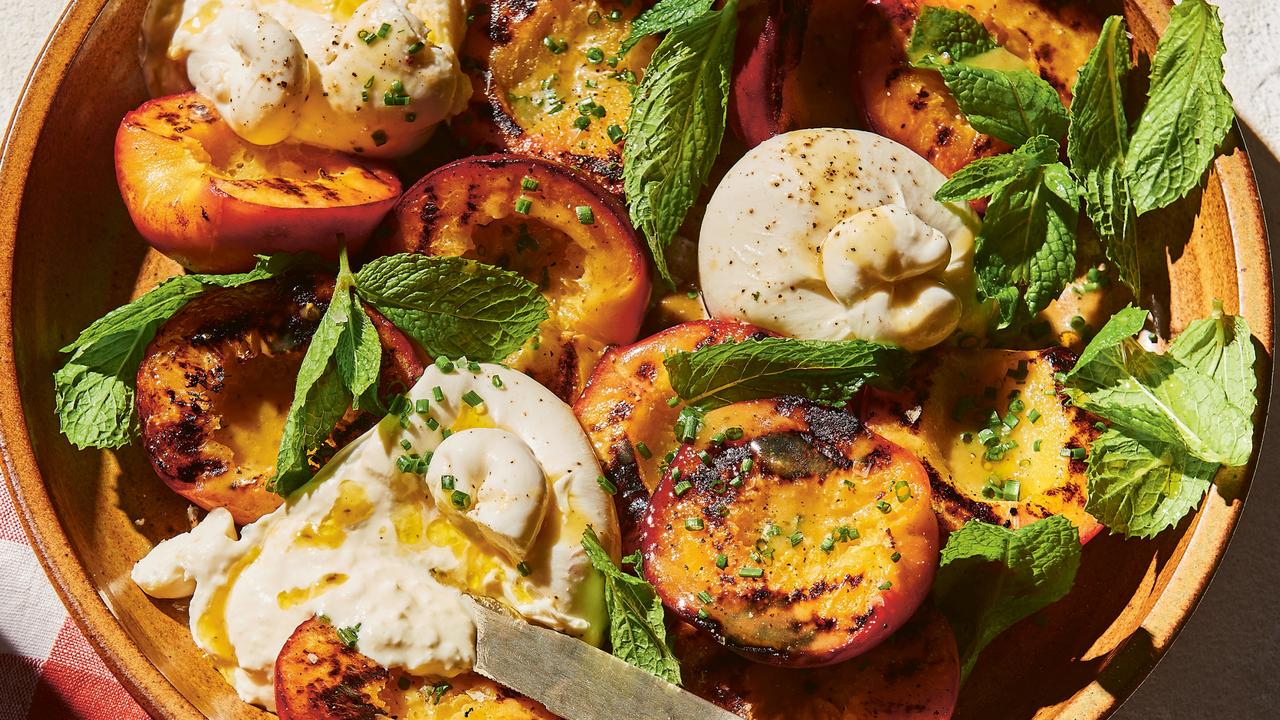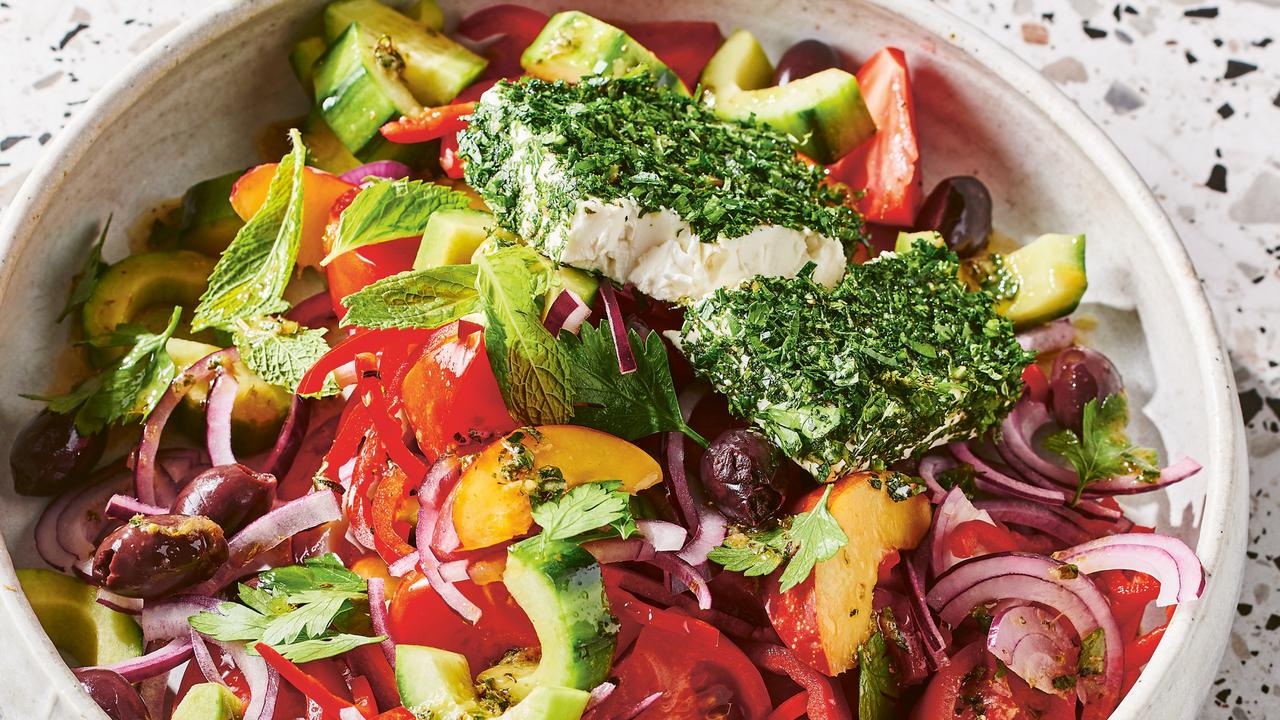Jane Stark garden in Balmoral, Sydney
Having designed the interiors for this home in Sydney’s Balmoral, reimagining the front garden was a logical extension for Jane Stark.
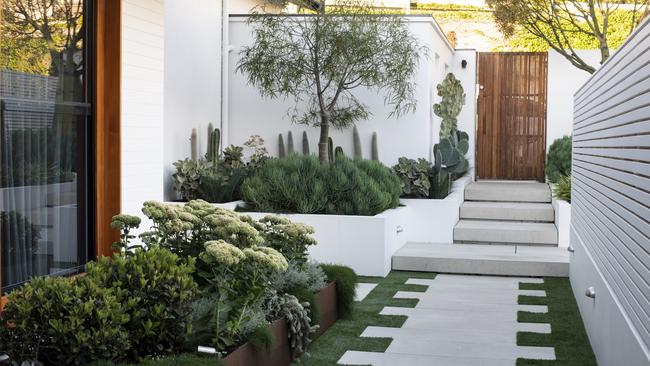
Having designed the interiors for this home in Sydney’s Balmoral, reimagining the front garden was a logical extension for Jane Stark. “I treat indoor and outdoor spaces with equal affection,” the designer says. Her clients, keen art collectors, loved the clean, crisp “gallery feeling” of the white interiors Stark created for them and sought a dramatic garden entry to match.
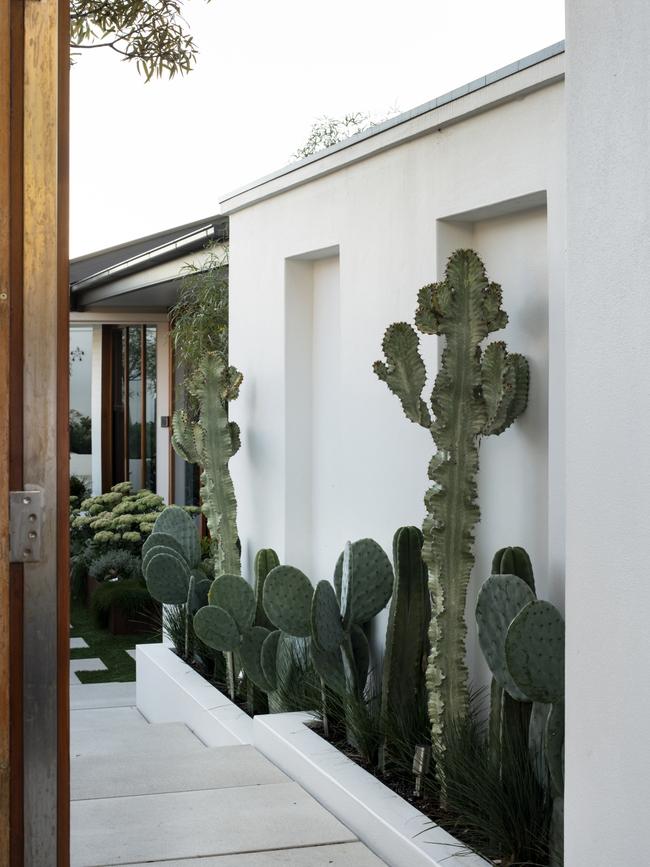
“The front garden was dark and narrow with a very high garden bed that was like a corridor to the house,” says Stark. “Taking that high bed out immediately opened it up.” She also replaced 10 awkward little steps with a series of concrete platforms to simplify the levels. “The platforms give more of a courtyard feel and prompt you to pause along the journey,” she explains.
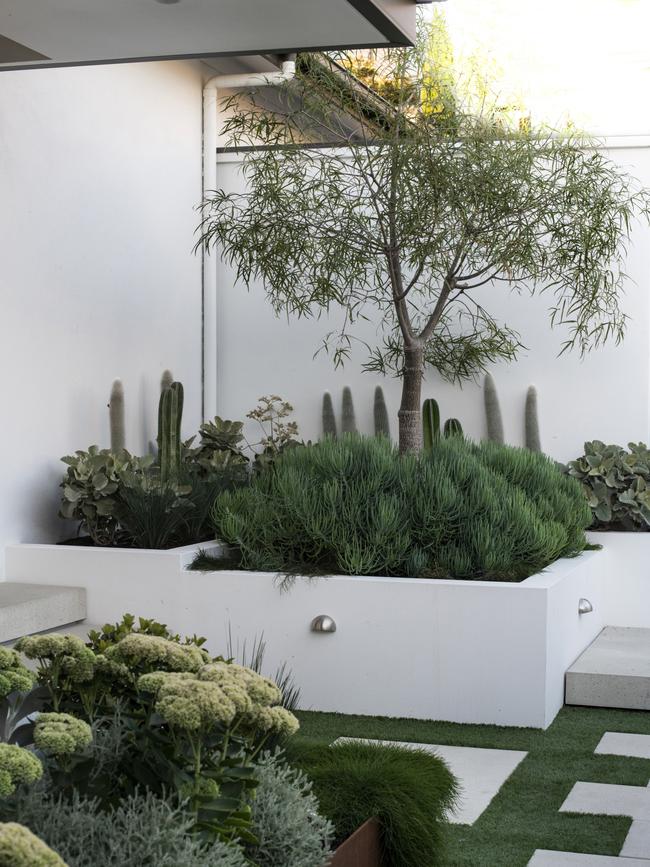
The clients wanted something fresh and modern, with grass for their dog and low-maintenance, waterwise plants. Stark’s response was to create “a living, sculptural garden” of generous beds that reduced the amount of hard surfaces. With a slab under much of the area and shallow soil in the rest, this is virtually a roof garden of raised beds. The lack of soil and effective drainage meant some judicial use of artificial grass. The one treasure kept from the original garden was a mature bottle tree (Brachychiton rupestris); Stark added a second in a planter box “to give the garden some gravitas and symmetry, and also a bit more shade”. The bold plant palette includes aloes, Casuarina ‘Cousin It’, Sedum ‘Autumn Joy’, Senecio ‘Icesticks’, spineless prickly pear (Opuntia), Cotyledon orbiculata and Crassula ‘Max Cook’. Columnar cactuses such as Trichocereus, Pachycereus and Cleistocactus add dramatic upright elements.
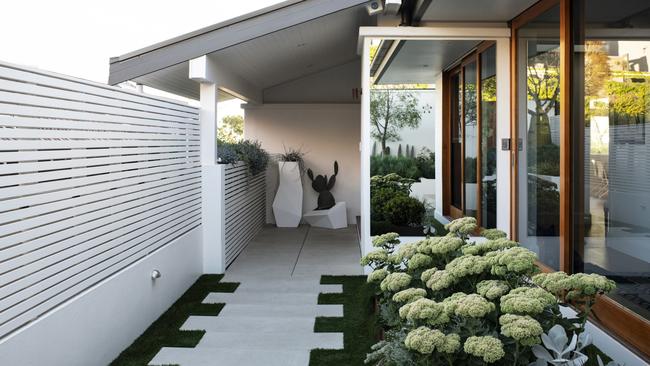
White is the dominant colour, not least to link with the interiors. “White is so cooling,” says Stark. “It’s as hot as Hades in that space because it faces north and west. White also sets off the subtle shades of silver and grey of the plants and is great for shadow play from the interesting plant shapes, both day and night.”
In a clever touch, she positioned a large mirror that reflects the garden as you approach the front door. “Originally I put it in so the client’s husband could see the garden when he sits in his study, but it also helps make the space look larger,” Stark says.
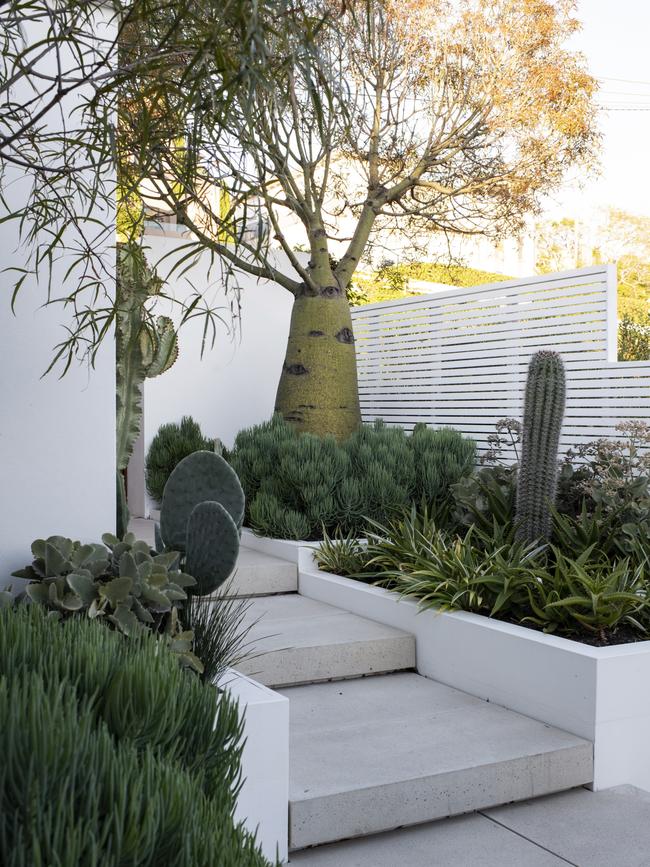
The garden, which was awarded Gold in its category as well as the overall Plantscape Design award in the 2019 Australian Institute of Landscape Designers & Managers Awards, is only 18 months old but “it has matured beautifully”, says Stark. The owner adds: “It brings us joy every night and day with its drama and beauty. It’s a work of art.”
Q&A
What I thought was native strawberry I now believe is Indian mock strawberry (Duchesnea indica). Its fruit are tasteless and now I’m finding it everywhere. How can I eradicate it? Tricia Bell, by email
Identified by its yellow flowers, this strawberry lookalike is a minor environmental weed in parts of NSW, Queensland and Victoria. Birds disperse the fruits and its creeping stems spread laterally. It likes moist sites. All you can do is persist in digging it up whenever you see it, especially before it sets more fruit; alternatively, smother it with layers of newspaper and mulch.
Our established hedges are affecting the growth of various plants in front of them. How deeply should I insert a root barrier next to the hedges? Leif Due, by email
Root barrier is sold in rolls of 450mm, 600mm and 900mm widths; it’s designed to deflect large tree roots downwards, away from buildings. The feeding roots of hedges – and the plants in front of them – will only be in the top 400-500mm of soil.
Clivias, plectranthus and euphorbia all do well under my enormous Ombu tree; what else could I mass plant under it? Lynda Paterson, Port Albert, Victoria
Tricolour star jasmine, with pink, cream and green foliage, takes sun and shade but is slow in its first year. Japanese spurge (Pachysandra terminalis) adds great texture and forms a dense carpet. Walking iris (Neomarica gracilis) grows and spreads easily, with glossy strap-like leaves and pretty flowers. Liriope ‘Stripey White’ is good in dry shade. Lamium galeobdolon has silver variegated leaves but may be hard to source; other lamiums are not as tough but worth a try.
Send your questions to: helenyoungtwig@gmail.com or Helen Young, PO Box 3098, Willoughby North, NSW 2068. Website: helenyoung.com.au. The best question for September wins a $120 hamper from Richgro, including Black Marvel Tomato and Vegetable Food, natural insect repellent and Grow Bag.


